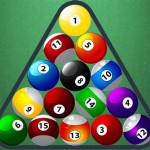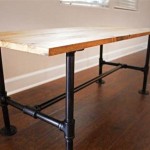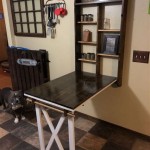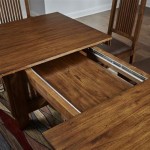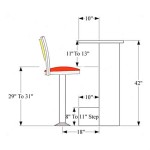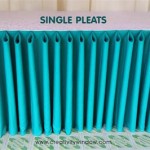Ping Pong Table Repair Paint: Restoring Performance and Aesthetics
Ping pong tables, also known as table tennis tables, are subjected to various forms of wear and tear over time. Frequent use, accidental impacts, exposure to the elements (in the case of outdoor tables), and improper storage can all contribute to damage to the playing surface. This damage can manifest in numerous ways, including scratches, chips, dents, and fading of the original paint. When the playing surface is compromised, the ball's bounce is affected, leading to inconsistent gameplay and diminished enjoyment. This is where the concept of ping pong table repair paint becomes relevant. Understanding the types of paint suitable for this purpose, the preparation required, the application process, and the maintenance needed after painting is crucial for effectively restoring a table tennis table to its optimal condition.
Repairing a ping pong table with specialized paint is not merely about aesthetics; it is fundamentally about restoring the table's playability. The characteristics of the paint used directly influence the ball's bounce, spin, and overall trajectory. The correct paint will create a smooth, consistent surface that accurately reflects the ball's energy, allowing players to execute shots precisely. Furthermore, a well-maintained and properly painted table enhances the longevity of the table itself, preventing further deterioration and saving the cost of replacing the entire table.
Identifying Suitable Ping Pong Table Repair Paint
The selection of appropriate paint is paramount for a successful ping pong table repair. The paint must possess specific characteristics to ensure optimal performance and durability. Several factors must be considered when making this selection. Firstly, the paint must be designed to dry to a very smooth, flat surface. Any texture or imperfections will negatively impact the ball bounce. Secondly, the paint needs to be durable enough to withstand repeated impacts from the ping pong ball without chipping or cracking. Thirdly, the paint's color must adhere to the regulation colors specified by the International Table Tennis Federation (ITTF), typically a matte dark blue or green. Finally, the paint formulation should be non-toxic and safe for indoor use, especially in environments where children may be present.
Several types of paint are commonly used for restoring ping pong tables. Acrylic latex paints are a popular choice due to their durability, ease of application, and relatively low cost. These paints are water-based, making them easy to clean up, and they offer good adhesion to various surfaces. However, it is imperative to select a high-quality acrylic latex paint specifically formulated for achieving a smooth, flat finish. Oil-based paints, while offering superior durability and hardness, are less commonly used due to their longer drying times, stronger odors, and the need for solvents for cleaning. Epoxy paints are another option, known for their exceptional hardness and resistance to chemicals and abrasion. However, epoxy paints are more expensive and require careful mixing and application, often making them less suitable for DIY projects. Specialized ping pong table paint kits are also available, often providing pre-mixed paints, rollers, and instructions tailored for restoring table tennis tables.
When choosing paint, it is crucial to read the manufacturer's specifications carefully. Look for paints that are specifically marketed for use on ping pong tables or other smooth, flat surfaces requiring a consistent ball bounce. The paint should also possess good leveling properties, meaning it will flow smoothly and evenly over the surface, minimizing brush strokes or roller marks. It is advisable to test a small, inconspicuous area of the table with the chosen paint to ensure proper adhesion and to assess the final finish before proceeding with the entire project.
Preparing the Ping Pong Table Surface
Proper preparation of the ping pong table surface is essential for achieving a professional-looking and long-lasting paint job. Neglecting this step can lead to poor adhesion, uneven coverage, and premature paint failure. The preparation process involves cleaning, sanding, and repairing any existing damage to the table surface.
The first step is to thoroughly clean the table surface to remove any dirt, dust, grease, or other contaminants. This can be accomplished using a mild detergent and water solution. Avoid using harsh chemicals or abrasive cleaners, as these can damage the table's original finish. After cleaning, rinse the surface thoroughly with clean water and allow it to dry completely. A clean, dry surface is critical for ensuring proper paint adhesion.
Next, the table's surface should be sanded to create a slightly rough texture that will promote paint adhesion. Use fine-grit sandpaper (e.g., 220-grit or higher) and lightly sand the entire surface. Avoid applying excessive pressure, as this can damage the table. The goal is not to remove the existing paint entirely, but rather to create a "key" for the new paint to grip onto. After sanding, remove any sanding dust with a tack cloth or a vacuum cleaner with a brush attachment. A dust-free surface is essential for preventing imperfections in the final paint finish.
Any existing damage to the table, such as scratches, chips, or dents, should be repaired before painting. Small scratches can be filled with wood filler or a patching compound designed for smooth surfaces. Apply the filler according to the manufacturer's instructions, allowing it to dry completely. Once dry, sand the filled area smooth and flush with the surrounding surface. For larger chips or dents, multiple applications of filler may be necessary. It is crucial to ensure that the repaired areas are perfectly smooth and level with the rest of the table surface to avoid affecting the ball's bounce. After repairing and sanding, clean the repaired areas thoroughly to remove any dust or debris.
Applying the Ping Pong Table Repair Paint
The application of the ping pong table repair paint requires careful technique and attention to detail to achieve a smooth, even, and durable finish. The choice of application method, the number of coats applied, and the drying time between coats all play a significant role in the final outcome.
The most common methods for applying ping pong table repair paint are rolling and spraying. Rolling is a popular choice for DIY projects due to its simplicity and ease of use. Use a high-quality foam roller designed for smooth surfaces. Avoid using nap rollers, as these can leave a textured finish. Apply the paint in thin, even coats, overlapping each stroke slightly to ensure complete coverage. Use a light, even pressure to avoid creating roller marks or ridges. Spray painting, on the other hand, requires specialized equipment, such as an airless sprayer or an HVLP (High Volume Low Pressure) sprayer. Spraying can achieve a very smooth and even finish, but it also requires more skill and experience. It is important to use the correct spray tip and to adjust the sprayer's settings to achieve the desired paint flow and coverage. When spraying, apply the paint in thin, even coats, overlapping each stroke by approximately 50%.
Multiple thin coats of paint are generally preferable to a single thick coat. Thin coats dry more quickly and evenly, reducing the risk of runs, drips, and sagging. The number of coats required will depend on the type of paint used and the desired level of coverage. Typically, two to three coats of paint are sufficient for restoring a ping pong table. Allow each coat to dry completely before applying the next coat. Refer to the manufacturer's instructions for the recommended drying time. Lightly sanding between coats with very fine-grit sandpaper (e.g., 400-grit or higher) can help to create an even smoother finish. Be sure to remove any sanding dust before applying the next coat of paint.
The ambient temperature and humidity can affect the drying time and the final finish of the paint. Ideally, the paint should be applied in a well-ventilated area with a temperature between 60°F and 80°F (15°C and 27°C) and a relative humidity below 50%. Avoid painting in direct sunlight or in humid conditions, as this can cause the paint to dry too quickly or unevenly. After the final coat of paint has been applied, allow the table to dry completely for the recommended curing time before using it. This will ensure that the paint has fully hardened and is resistant to scratches and chips. The curing time can vary depending on the type of paint used, but it is typically at least 24 to 48 hours.
Maintaining the Repainted Ping Pong Table
Proper maintenance is essential for prolonging the life of the repainted ping pong table and preserving its playing surface. Regular cleaning, protection from damage, and proper storage practices will help to keep the table in optimal condition for years to come.
The table surface should be cleaned regularly to remove dust, dirt, and sweat. Use a soft, damp cloth or sponge and a mild detergent solution. Avoid using harsh chemicals or abrasive cleaners, as these can damage the paint finish. Wipe the surface gently and evenly, and then rinse with clean water. Dry the surface thoroughly with a clean, dry cloth. For stubborn stains or marks, try using a specialized ping pong table cleaner. These cleaners are formulated to remove dirt and grime without damaging the paint finish.
Protect the table from damage by avoiding impact with sharp objects. Avoid placing heavy objects on the table surface, as this can cause dents or scratches. When moving the table, lift it carefully and avoid dragging it across the floor. In outdoor settings, cover the table with a waterproof cover when it is not in use to protect it from the elements. Exposure to sunlight, rain, and extreme temperatures can cause the paint to fade, crack, or peel. Indoor tables should be stored in a cool, dry place away from direct sunlight. Use a ping pong table cover to protect the table from dust and scratches.
If the table is used frequently, it is likely that the paint will eventually wear down in certain areas. Touch up any scratches or chips as soon as they appear to prevent them from spreading. Use a small brush and the same paint that was used to repaint the table. Apply the paint in thin, even coats, and allow it to dry completely before using the table. Regularly inspect the table for any signs of damage or wear. Addressing these issues promptly can prevent more serious problems from developing and extend the life of the ping pong table. By following these maintenance tips, the repainted table can maintain its performance and aesthetic appeal for a longer period.

How To Refurbish A Ping Pong Table Home On 129 Acres

How To Paint A Ping Pong Table Doityourself Com

How To Resurface A Ping Pong Table

Paint Resin Table Ping Pong A B Kg 1 250 Colours Enamel Lines Free Gift

Paint Resin Table Ping Pong A B Kg 1 250 Colours Enamel Lines Free Gift

Flynama 72 In Indoor Outdoor Freestanding Ping Pong Table The Tables Department At Com

How To Resurface A Ping Pong Table

How To Repair The Surface Of A Table Tennis Letsfixit

How To Resurface A Ping Pong Table

Ping Pong Table Repair Made Simple Tennis Spot

